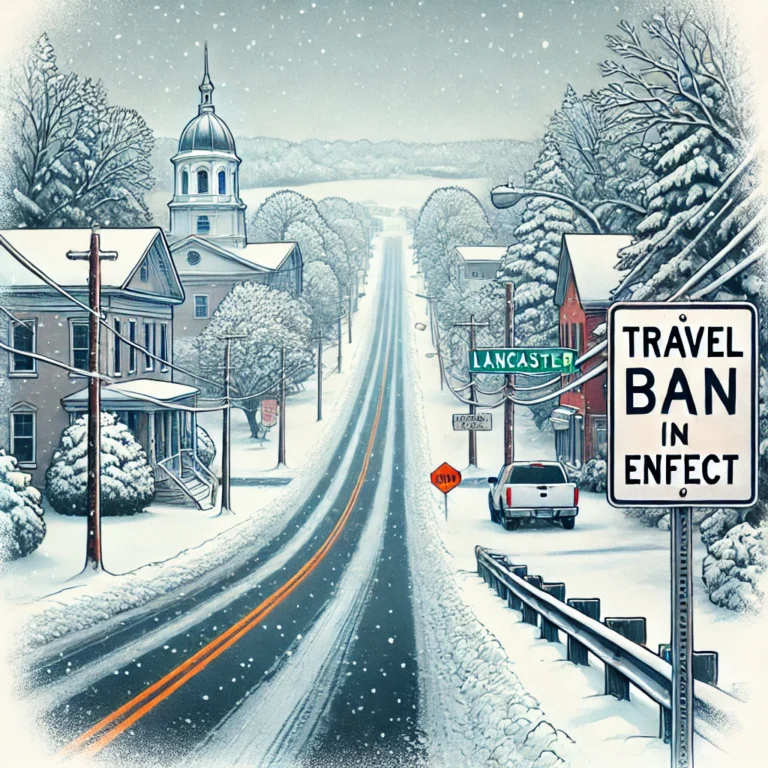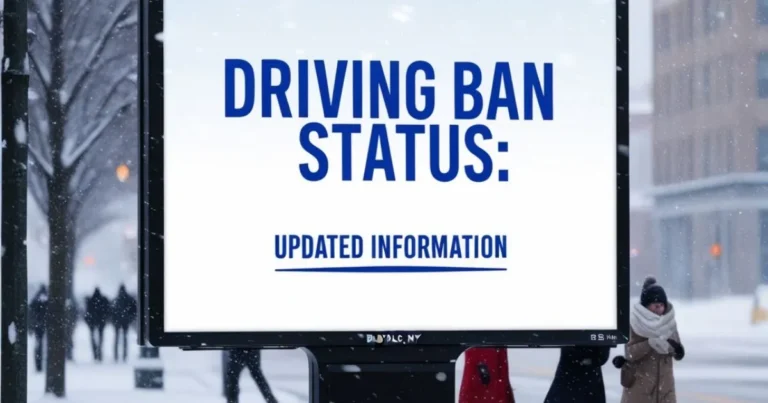How to Check for Travel Bans Near Me in Real-Time
Travel Bans Near Me
Staying informed about travel bans is crucial, especially during severe weather, emergencies, or other disruptions that may put your safety at risk. Whether you’re commuting to work, planning a road triphttps://roadtrippers.com/, or simply running errands, it’s important to know how to check for travel bans near you in real-time. This guide will provide you with the best ways to stay updated, explain how travel bans work, and offer useful resources for ensuring your safety.
What Is a Travel Ban?
A travel ban restricts or prohibits vehicular movement in specific areas due to dangerous conditions. These bans are typically issued by local governments or emergency services in response to:
- Severe weather events (snowstorms, hurricanes, etc.)
- Natural disasters (wildfires, floods)
- Public safety concerns (accidents, hazardous road conditions)
For example, a recent travel ban in Buffalo, NY was issued due to a major snowstorm that made roads impassable.
Why You Should Stay Informed About Local Travel Bans
Keeping track of local travel bans can help you avoid getting stranded or fined for driving during a restricted period. Travel bans can affect daily routines, like getting to work or picking up groceries, especially if they come into effect suddenly.
It’s important to stay informed to:
- Avoid delays or detours.
- Stay within legal driving limits.
- Keep yourself and your passengers safe.
Recent weather events, such as the Buffalo NY driving ban, highlight the importance of real-time updates to avoid dangerous road conditions.
Key Sources to Check for Travel Bans Near You
When checking for travel bans near you, consider the following sources:
- Government Websites: State and local government websites often provide real-time updates about travel bans, road closures, and weather advisories.
- News Websites and Apps: Local news stations are reliable for real-time travel ban information. They often provide live coverage during severe weather events.
- Social Media: Many local governments and news outlets post updates on platforms like Twitter or Facebook.
- Emergency Alert Systems: Sign up for emergency alerts from your local government to receive text messages or notifications about travel bans.
During a snowstorm, checking for real-time updates on road conditions in Buffalo, NY helped many drivers avoid dangerous routes.
How to Set Up Real-Time Alerts for Travel Bans
To stay on top of travel bans, set up real-time alerts on your devices. Here’s how:
- Weather and Mapping Apps: Apps like Google Maps, Waze, and weather apps allow you to set up notifications for severe weather and road closures.
- Local Government Alerts: Many local governments offer emergency alert systems that send you text messages or emails during travel bans.
- Social Media Notifications: Follow your local Department of Transportation (DOT) or news outlets on social media and turn on notifications.
Setting up alerts for road conditions in Buffalo, NY, for example, ensures you receive the latest updates when a travel ban is issued.
How Weather Impacts Travel Bans
Travel bans are often directly related to severe weather conditions, such as:
- Snowstorms
- Hurricanes
- Flooding
- High winds
For instance, the weather-related travel ban in Buffalo, NY is a prime example of how a snowstorm can make roads unsafe, leading to widespread restrictions on travel. Staying aware of weather forecasts and conditions can help you prepare for possible bans.
Travel Ban Updates: What You Need to Know
When checking for updates on travel bans, make sure you’re looking for key details:
- Start and End Times: Know when the ban begins and ends.
- Affected Areas: Determine which areas are under the ban.
- Road Conditions: Check for dangerous or impassable roads.
During a major storm, travel bans may last for several hours or even days. Recent travel ban updates in Lancaster, NY provided critical information for residents navigating dangerous roads.
Checking Road Conditions in Your Area
It’s essential to check real-time road conditions before heading out, especially when a travel ban may be imminent. Use the following methods:
- State Department of Transportation (DOT) Websites: These sites provide live updates on road closures, hazardous conditions, and traffic reports.
- GPS Apps: Many GPS apps like Google Maps will notify you of road closures and suggest alternative routes.
- News Websites: Local news stations often have live traffic reports, which can alert you to accidents or closures.
For example, during severe weather, monitoring road conditions in Buffalo, NY helps drivers avoid areas that are likely to close or become unsafe.
Driving During a Travel Ban: What You Should Know
Driving during a travel ban is illegal and can result in fines or penalties. In some cases, emergency responders may be called to assist stranded drivers, which could put their lives in danger as well.
Here’s what you need to know:
- Penalties: Driving during a ban may result in fines, impounded vehicles, or even jail time, depending on the severity of the situation.
- Safety Risks: Road conditions during a travel ban are often too dangerous for travel, risking accidents and injuries.
- What to Do: If you’re caught driving during a ban, pull over safely and wait for the ban to be lifted.
During the Buffalo NY driving ban, many residents were fined for violating the restrictions.
Travel Bans in Smaller Towns: What to Expect
Travel bans are not limited to big cities; smaller towns often enforce them as well. The conditions that lead to bans may differ, but the restrictions are just as serious.
For example, Lancaster, NY, a smaller town outside Buffalo, often enforces travel bans during heavy snowfalls and other weather emergencies. Residents should check their local alerts just like in larger cities.
How to Stay Safe During a Travel Ban
Your safety is the top priority during a travel ban. Here are some tips:
- Stay Indoors: Avoid traveling unless absolutely necessary. Stay updated on local news and alerts.
- Prepare for Emergencies: Keep emergency supplies in your home and car, such as food, water, blankets, and a first aid kit.
- Follow Updates: Continuously monitor updates on road conditions and weather reports to know when it’s safe to travel again.
During the weather-related travel ban in Buffalo, NY, residents who stayed indoors and avoided the roads remained safe during the storm.
Conclusion
Staying informed about travel bans in your area is essential for your safety and the safety of others. By using real-time alerts, checking reliable sources, and preparing for emergencies, you can navigate travel bans with confidence.
For more information on travel bans and road conditions in your area, visit these helpful resources:







